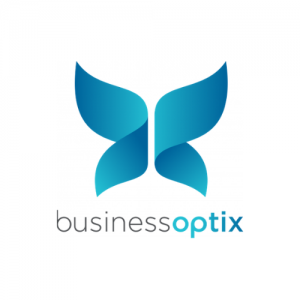Transformation Engagement Framework
The key to better aligning your business and operations is to model them so can you see how they support each other. Any big changes in one will likely lead to changes in the other. There are many reasons that you might want to get a better handle on alignment but they generally fall into a few categories:
Disruption
As in, business was forced to change and now operations is mess of whatever compromises we needed to make in order to survive.
Modernization
As in, my old systems and software aren’t providing the same value that new options could, but moving to a new platform will require changes to how we conduct business and operate..
Innovation
As in, I’m ready to make a big change and I just need to be able to understand how much impact this is going to have. Understanding current state isn’t enough, I need to develop a target operating model.
There are techniques that our advisors use to identify alignment and misalignment in these models. They are simple at the highest level, but quickly get into details that can only be managed using specific frameworks and tools. The good news is that working through this is not an all or nothing endeavor. Think specializes in remaining practical and efficient. The level of detail needed for each case is different and the value received must always far outweigh the resources expended.
Often, the easiest place to start is at the Operating Model Canvas and detail the Business Model only to the extent that is needed. If you are working toward a new Target Operating Model, you’ll usually want to develop the current-state Operating Model to have something to use to identify changes.
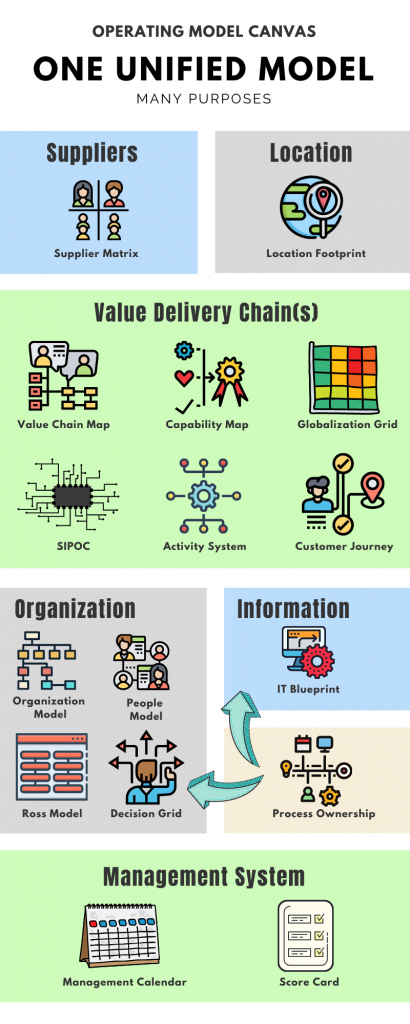
Business Model Canvas
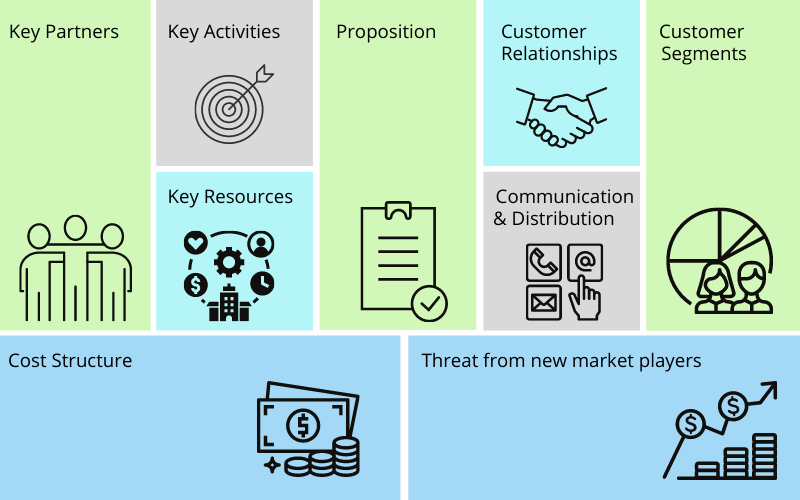
Operating Model Canvas
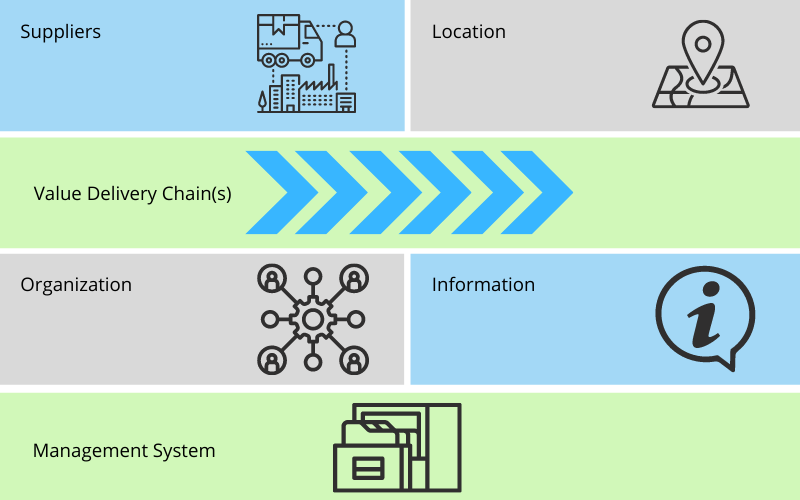
Target Operating Model
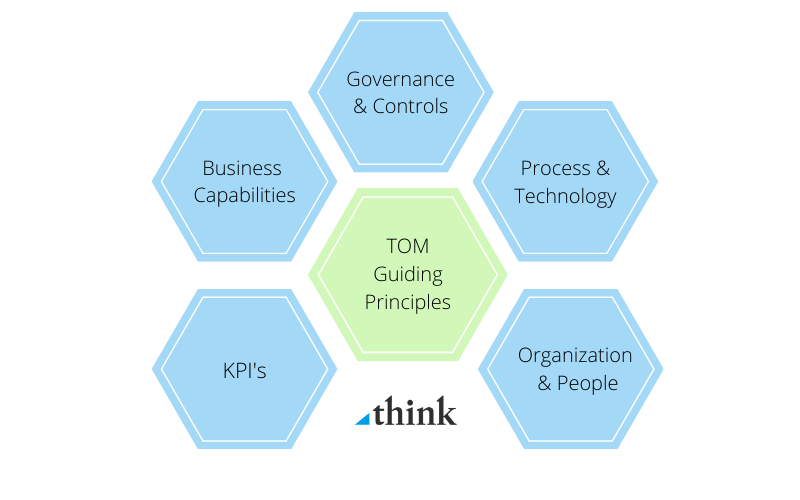
Every engagement is as unique as the business and operational needs being addressed.
Think’s General Approach
- Draw the value delivery chain for each segment or a group of customers looking for the same value proposition and highlight where they are problems and what are or could be sources of advantage/excellence.
- Consider what activities will be combined or linked across to value change and which will be kept separate or outsourced.
- Convert the resulting value chain map into an organizational model.
- Add support functions i.e. HR, IT structure to the model and highlight challenges issues or constraints, difficult links and sources of advantage use the challenges to give focus to the rest of design work.
- Develop a decision grid for the big decisions
- Develop people models for important groups
- Think about where people and important assets will be located
- Identify owners of key cross organization across location processes
- Develop a high-level IT blueprint what core application and who owns them
- Identify those suppliers that need a collaborative relationship with the organization
- Review the challenges and design principles to make sure all have been addressed
- Define a scorecard including projects and KPIs
- Develop the management calendar or planning and performance review meetings.
Operating Model Design
Work Levels
The key to working efficiently is to know when to stop. Sometimes this is a complex equation but in the end it’s all about whether the time and resources you put into something provides commensurate value.
As a high-level organizer, we sometimes consider engagements at pre-established Levels that build on each other. Level 1 relates to low effort and Level 4 for the more complex and difficult. The following tables provides a breakdown of typical activities and where we have found that we need to focus our attention.
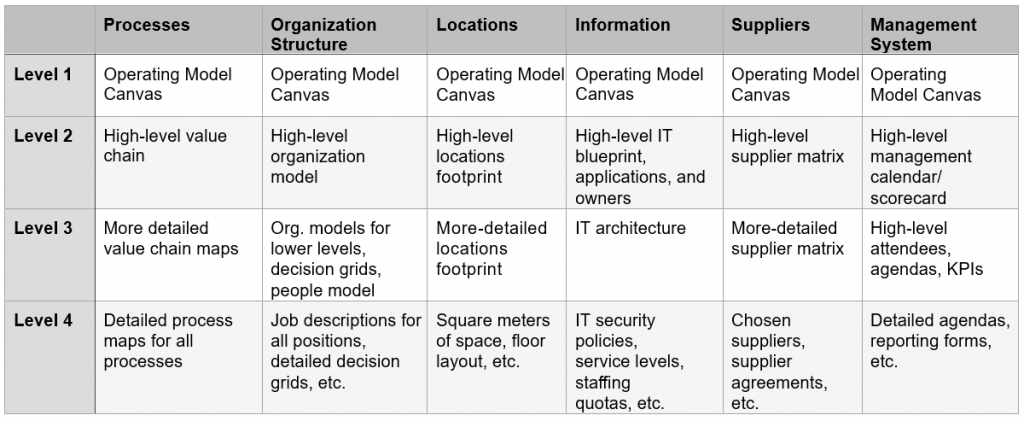
The Right Tools for the Job
Not every job requires every tool in our toolbox, but it’s good to know that when we have a need for modeling specific attributes of a business, we have the tools available to do so efficiently and without re-creating the wheel.
Consider an Operating Model Canvas and the tools we might use to capture detail that is needed to model an organization’s operations:
One Unified Model
for Many Purposes.
Using BusinessOptix to properly build and relate any sub-set of these tools provides incredible opportunities to extract views of a business to better understand it. For example, let’s say you would like start from the point of view of a logic map of your business. You could then look at the people, processes, systems and stakeholders that are associated with the operational logic that runs your business. Or lets’ say you want to start from the point of view of how Stakeholders are related or connected by you organization’s operating model. Reviewing a Stakeholder map could reveal connections that can be leveraged or prevent unintended consequences of an operational change.
